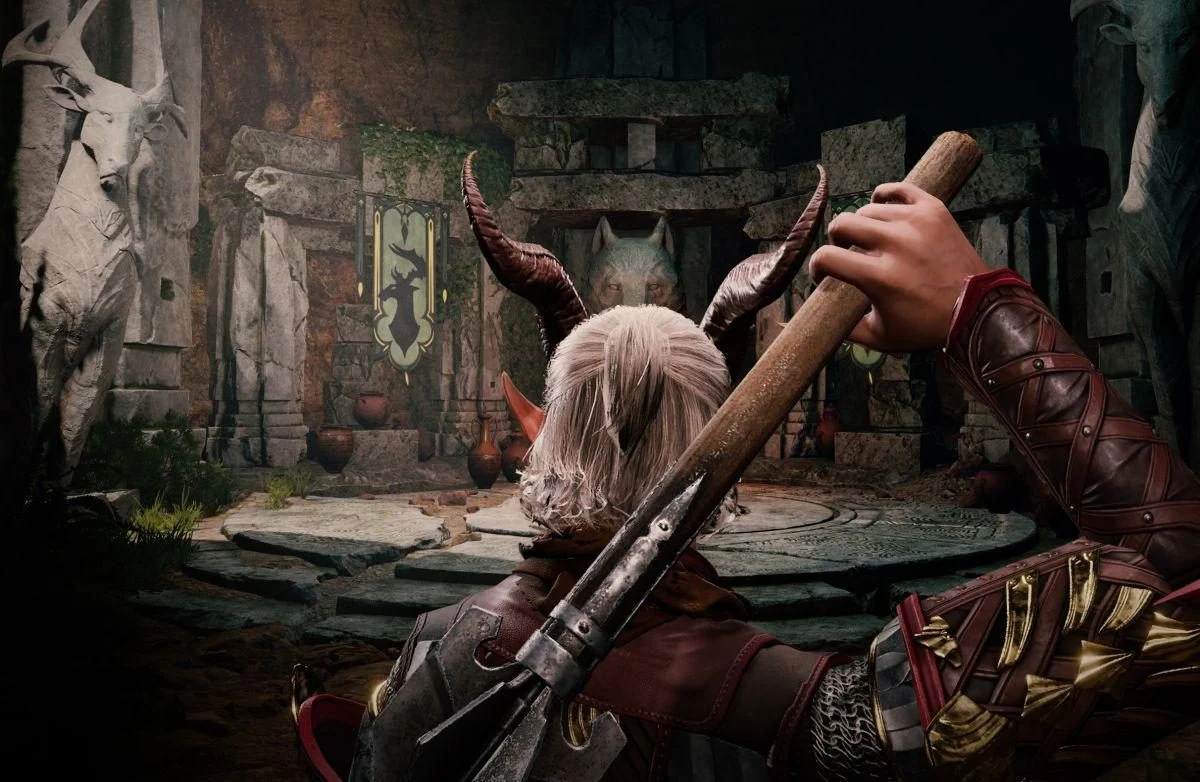Introduction to Baldur’s Gate 3
Baldur’s Gate 3 represents a significant evolution in the revered Baldur’s Gate series, which has been a cornerstone of role-playing games since the late 1990s. Developed by Larian Studios, known for the Divinity: Original Sin series, the game has garnered extensive attention due to its promise of a deep narrative and engaging mechanics. The anticipation surrounding Baldur’s Gate 3 reached a fever pitch as fans eagerly awaited a modern reinterpretation of a classic that has inspired countless RPGs over the decades.
The legacy of the Baldur’s Gate series cannot be understated; it is often credited with shaping the face of computer RPGs by introducing intricate storylines, memorable characters, and real-time combat combined with strategic elements. Released originally in 1998, Baldur’s Gate set the stage for a new era of storytelling in video games, driven by the rules of Dungeons & Dragons (D&D). This game established a template that emphasized choice and consequence, allowing players to explore rich worlds crafted with care and imagination.
Baldur’s Gate 3 seeks to honor this tradition while embracing modern gaming advancements. It incorporates the fifth edition of Dungeons & Dragons rules, thereby offering players familiar mechanics wrapped in contemporary graphics and complex gameplay dynamics. This blend provides a fresh experience for both old fans and newcomers alike, ensuring that each decision weighs heavily on the player’s journey. The release of Baldur’s Gate 3 not only reignited excitement for the franchise but also reaffirmed D&D’s enduring relevance in the gaming industry. As a game that combines nostalgia with innovation, it sets a new standard for role-playing experiences in the current gaming landscape.
Character Customization and Development
Baldur’s Gate 3 offers an impressive array of character customization options, enabling players to create a unique avatar that aligns with their narrative preferences and playstyle. At the outset, players can select their character’s race, which influences not only their physical appearance but also grants various innate abilities and traits. The races available range from traditional fantasy staples like elves and dwarves to more exotic options such as tieflings and githyanki, each contributing distinct strengths and weaknesses to gameplay.
In addition to race, players choose a class that determines their character’s skills and role within the party. Classes include traditional archetypes like fighters, wizards, and rogues, as well as subclasses that allow for further specialization. This choice affects both combat mechanics and interactions during quests, allowing for multiple approaches to challenges. The integration of backgrounds presents another layer of customization; players can select a backstory that informs their character’s motivations and influences dialogue options throughout the game.
The depth of character development is further enhanced by the game’s rich skill system, which allows for tailored growth as players progress. Characters gain experience points that can be invested in various abilities, effectively shaping their development in response to player choices. This fluid customization means that a single character’s journey can differ dramatically from others, creating a diverse in-game experience. Players can craft their characters as they see fit, leading to personal stories that enhance immersion and interest.
With every decision made regarding race, class, and background, players not only define their character in terms of gameplay mechanics but also influence the emotional and narrative arc of their adventure. The significant considerations in character customization in Baldur’s Gate 3 ensure that each journey through the game is uniquely personal and engaging.
Narrative Choices and Consequences
Baldur’s Gate 3 stands out in the realm of role-playing games due to its intricate narrative structure, which is markedly shaped by player choices. This game invites players into a rich world where every decision can create a branching storyline, presenting an array of possibilities that keep players engaged and invested. The depth of the narrative is not merely superficial; rather, it operates on multiple layers, intertwining character development with world-building that reflects the consequences of the players’ actions.
Throughout the game, players encounter pivotal moments that can significantly alter character relationships and influence broader world events. For example, a choice made in a seemingly minor dialogue can lead to an ally’s betrayal or a new alliance, dramatically shifting the dynamics of the party. Additionally, decisions can affect how various factions perceive the player’s character, leading to varied repercussions in subsequent quests and interactions. The sense of agency that comes from knowing one’s choices carry weight enhances the emotional investment in the storyline and characters.
Moreover, the consequences of player choices are not always immediately apparent; some decisions may echo throughout the game’s plot, manifesting in unforeseen ways that surprise the player. This delayed consequence mechanism adds layers of complexity to gameplay, as players must ponder the long-term effects of their actions, fostering a sense of realism. Events that transpire in the game world can act as direct reflections of the players’ choices, reinforcing the narrative’s cohesion and intelligence.
Overall, Baldur’s Gate 3 effectively utilizes narrative choices to create a deeply immersive atmosphere. Through the interplay of dialogue, character interactions, and environmental changes, the game successfully captivates players, exceeding their expectations of storytelling in a role-playing context and providing them with a living world where their actions truly matter.
Multiplayer Features and Cooperative Play
Baldur’s Gate 3 has integrated a suite of multiplayer features that significantly enhance the cooperative gameplay experience. Players can engage in cooperative sessions with up to four participants, allowing friends to join forces in their RPG journey. Each player creates and controls their own character, contributing to a diverse party. This diversity brings an additional layer of strategy and depth to gameplay, as players can leverage their characters’ unique abilities and backgrounds to navigate challenges collaboratively.
The multiplayer format promotes a shared storytelling experience, allowing players to make decisions together that affect the game’s narrative. Players often find that discussing potential choices leads to enriched interactions and deeper engagement with the game world. The dynamic of having multiple players involved in decision-making can lead to unexpected outcomes, as differing opinions may affect the direction of the story. Such interactions not only foster camaraderie but also enhance the overall role-playing experience, as players embody their characters while adapting to the choices made by their friends.
Furthermore, cooperative play encourages strategic planning in combat scenarios. Each character class has distinct advantages, and merging these traits can lead to compelling tactical advantages during battles. For example, positioning a spell-casting character behind a frontline warrior can maximize effectiveness in combat, showcasing the importance of collaboration. Additionally, players can share resources, discuss enemy strengths, and devise strategies that best utilize their party’s skills. Feedback from the community highlights that these cooperative elements significantly contribute to the game’s replayability, as the variety of player interactions leads to unique experiences each time a new session is played. This cooperative engagement not only enriches individual gameplay but also solidifies the game’s standing as a multifaceted role-playing experience.


No responses yet